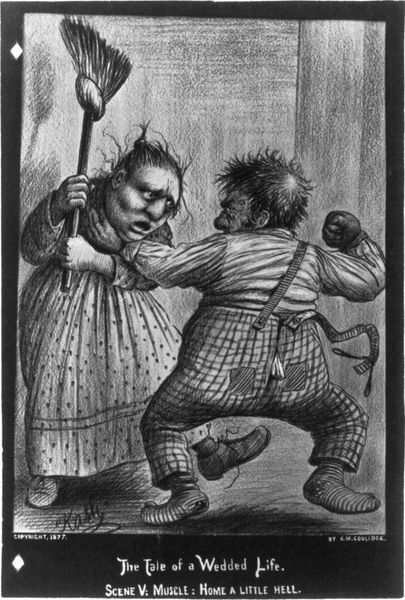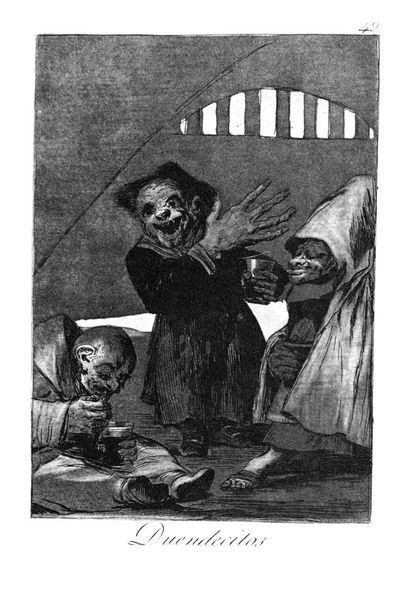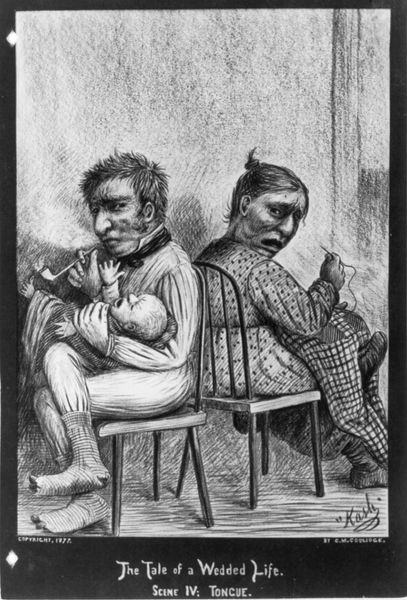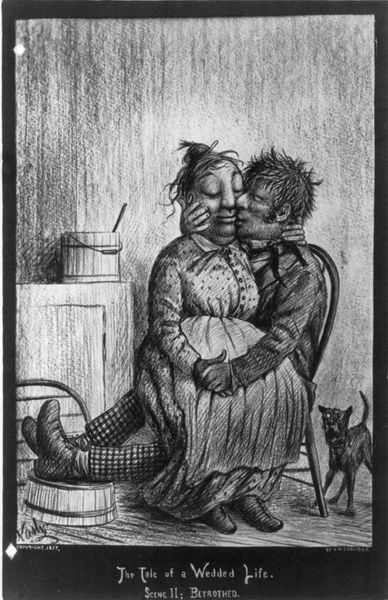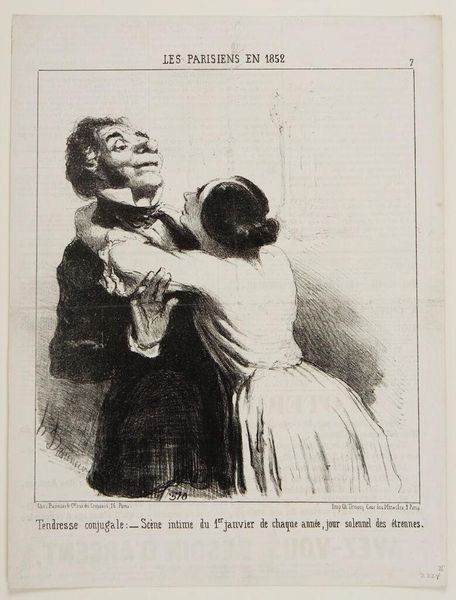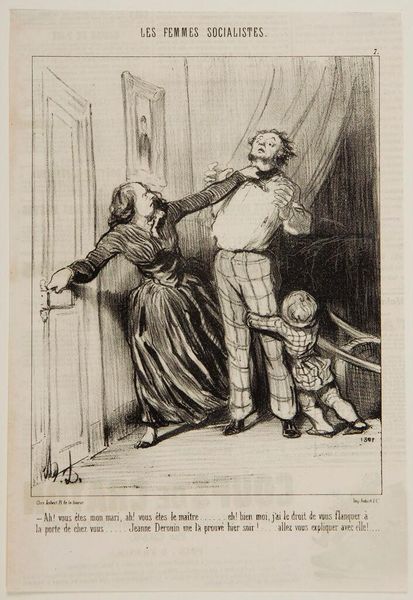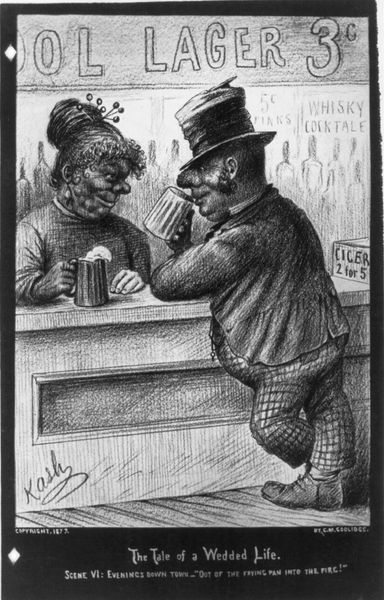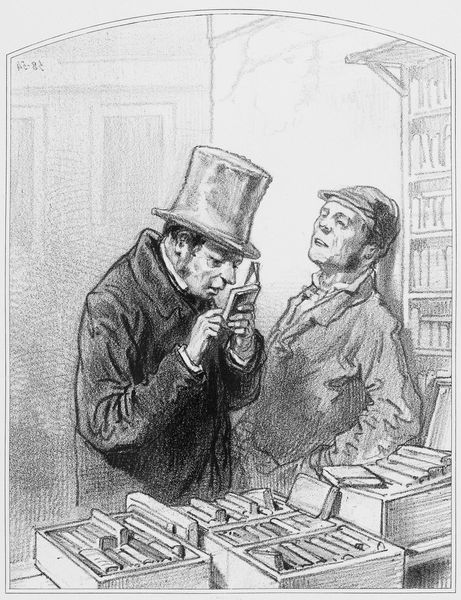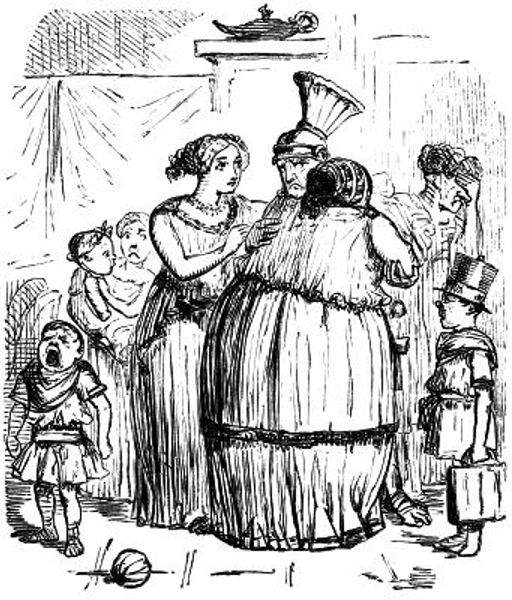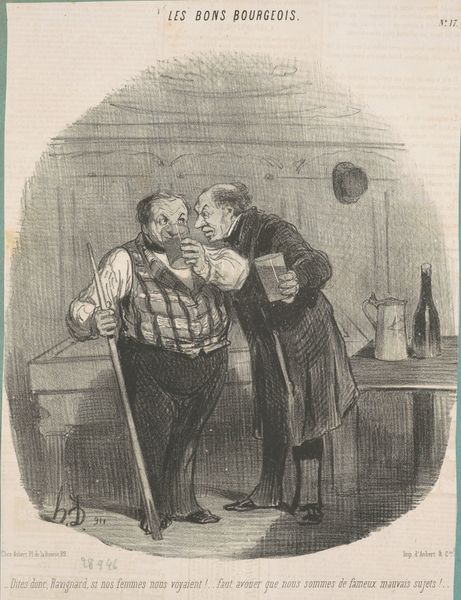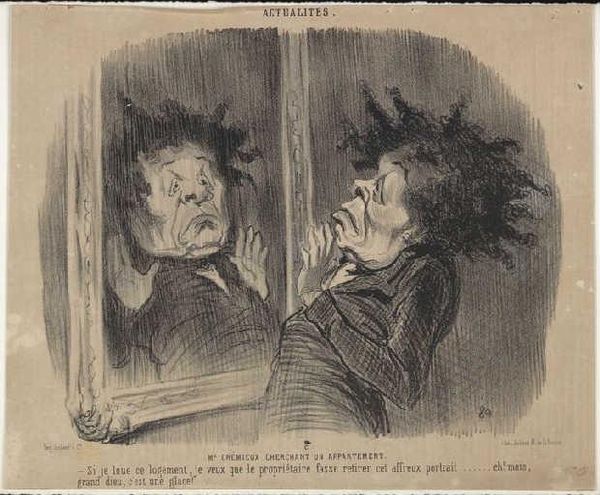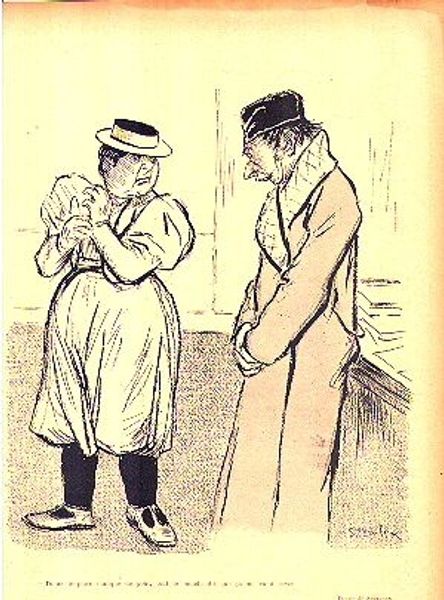
drawing, charcoal
#
portrait
#
drawing
#
narrative-art
#
charcoal drawing
#
figuration
#
genre-painting
#
charcoal
#
academic-art
Copyright: Public domain
Curator: This charcoal drawing, titled "Scene III - Married. Couple Standing," was created by Cassius Marcellus Coolidge in 1877. It seems to depict a rather… unique newlywed couple. Editor: Yes, "unique" is one word for it. They appear to be beaming with wedded bliss, though there's a hint of… well, discomfort, maybe? Or just plain awkwardness? Something's definitely not quite romantic fairytale in this picture. Curator: I think what we see here is Coolidge poking fun at social expectations and the institution of marriage. This was during a period of shifting gender roles and anxieties around domesticity. His artistic choices served to explore public sentiment regarding family norms and marriage as institutions in late 19th century America. Editor: Agreed. Look at the body language – his rigidly clasped hands, her possessive arm around him. It's not tender affection; it's almost…performative. It's playing into the expected happiness that marriage should bring while suggesting something more complex and possibly fraught underneath. And look closely. They're smiling but are those shadows of unhappiness in their eyes, maybe even suppressed desperation. It’s complex. Curator: And we need to read beyond their race. The couple represents the changing dynamics within marginalized relationships as those between dominant or heterosexual orientations. Consider, for instance, how expressions of familial unity are being affected with greater autonomy in late nineteenth century life for various identities. This makes a case of deconstructing conventional notions on gender dynamics where intimacy plays out amid power structures that can be exclusive within institutions such as wedlock and matrimony which has direct social impacts which extend even until now in discourses regarding human rights advocacy campaigns across modern western liberal democracies advocating more pluralism by allowing those otherwise not able at experiencing full expression concerning themselves romantically so now have agency after historical disparities rooted both systematically including patriarchal based policies where women had historically disproportionately fewer political means through marriage impacting decisions even regarding personal economic decisions making the work very potent politically by Coolidge’s reflection using narrative figuration to show otherwise unspoken implications to viewers allowing discussion regarding marginal relationships! Editor: It's fascinating how Coolidge uses charcoal to create this somewhat grotesque yet strangely compelling image. There's no flattery, no idealization – just raw, almost unsettling honesty. It's less of a portrait and more of a social commentary. I leave seeing that. Curator: Yes, precisely! Through what appears a simple drawing, Coolidge invites us to confront the messy realities behind the veneer of marital happiness. He compels viewers not only understand these characters; viewers may contemplate implications through a far sociopolitical lens as individuals reflecting experiences even until modern contexts impacting public understanding especially related campaigns toward marginal members through intersection narratives revealing dynamics around identities that are underrepresented with considerations affecting equality or lack thereof.
Comments
No comments
Be the first to comment and join the conversation on the ultimate creative platform.
